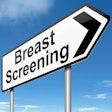Women consist of about one out of every four radiologists in the U.S., but a student-led initiative is working to bring that number up and close the gender gap.
Women in Radiology Education (WIRED), formed in 2020 at the University of Alabama-Birmingham (UAB), is a student-led group dedicated to advancing radiology mentorship, research, and service opportunities for women in medical school. Group members led by Laura Minton, MD, who is currently a resident at the Mayo Clinic in Jacksonville, FL, recently published an article in Clinical Imaging that outlined WIRED’s goals.
“I believe there is a sense of belonging with WIRED,” Minton told AuntMinnie.com. “The focus of WIRED is more on the applicant and on the person and creating a sense of belonging in the field of radiology.”
Since 2019, more women are attending medical school and becoming residents and fellows. However, they still face several institutional barriers compared to their male counterparts, including pay and promotion gaps, lack of support for family and medical leave, burnout, and discrimination and harassment. These barriers at times lead to women leaving the medical workforce altogether.
Furthermore, data from the Association of American Medical Colleges (AAMC) suggest that the proportion of women entering radiology residency has stalled at 27.7%.
Minton co-founded WIRED with these facts in mind and with the idea that early exposure to the field and intentional mentorship can help bridge the gender gap in radiology.
“We think the earlier that exposure [to radiology] starts in medical school, the better and more likely it is that women are going to choose radiology as a specialty,” she said.
Since 2020, WIRED has hosted student-led events focusing on education, skills, and community. Examples include United States Medical Licensing Examination (USMLE) reviews, match panels where residents can offer insights to students, shadowing, forming mentorships with high school and middle school students, trivia events, and co-hosted events with other women-led and diversity-focused groups.
Since its founding, WIRED has grown to six established chapters in medical schools in Florida, North Carolina, and Puerto Rico. It has also worked to coordinate themed events, journal clubs, and outreach events with medical students in Arizona, New York, Ohio, Illinois, Hawaii, Texas, Ecuador, Algeria, and India.
Minton said that when WIRED was created, out of the 11 students who were in UAB’s applied radiology program, two were women. In 2024, five out of the eight students in the program were women.
The team’s manuscript in Clinical Imaging outlines how interested students can establish their own WIRED chapter. Steps include the following: establishing a leadership team (including seeking supportive faculty mentors); registering the interest group with the medical school; recruiting medical students who share the same interests for officer positions; brainstorming goals; planning events; sharing information about the organization with other students to drive recruitment; and holding student-run meetings.
Minton said that to make WIRED chapters successful, student leaders need to follow through on what they say and hold scheduled meetings to outline event plans.
WIRED UAB chapter adviser Desmin Milner, MD, said that the founding group’s confidence and independence have been keys to WIRED’s success.
“It gives me a lot of hope,” she told AuntMinnie.com. “This is not a problem that will be solved overnight, but I’m sure it will get smaller and smaller as the years go by. This is the type of the stuff we have to do to put ourselves out there.”
The full article can be accessed here.



















